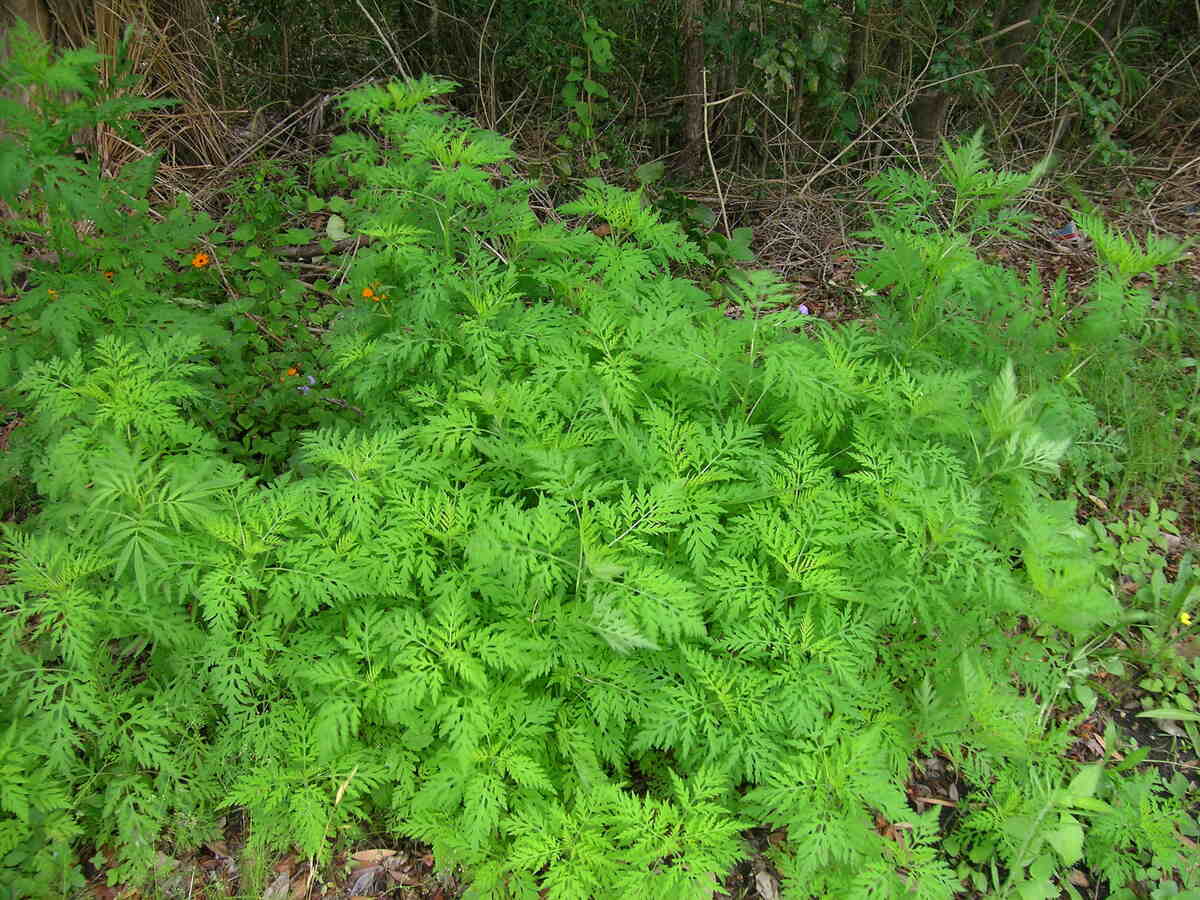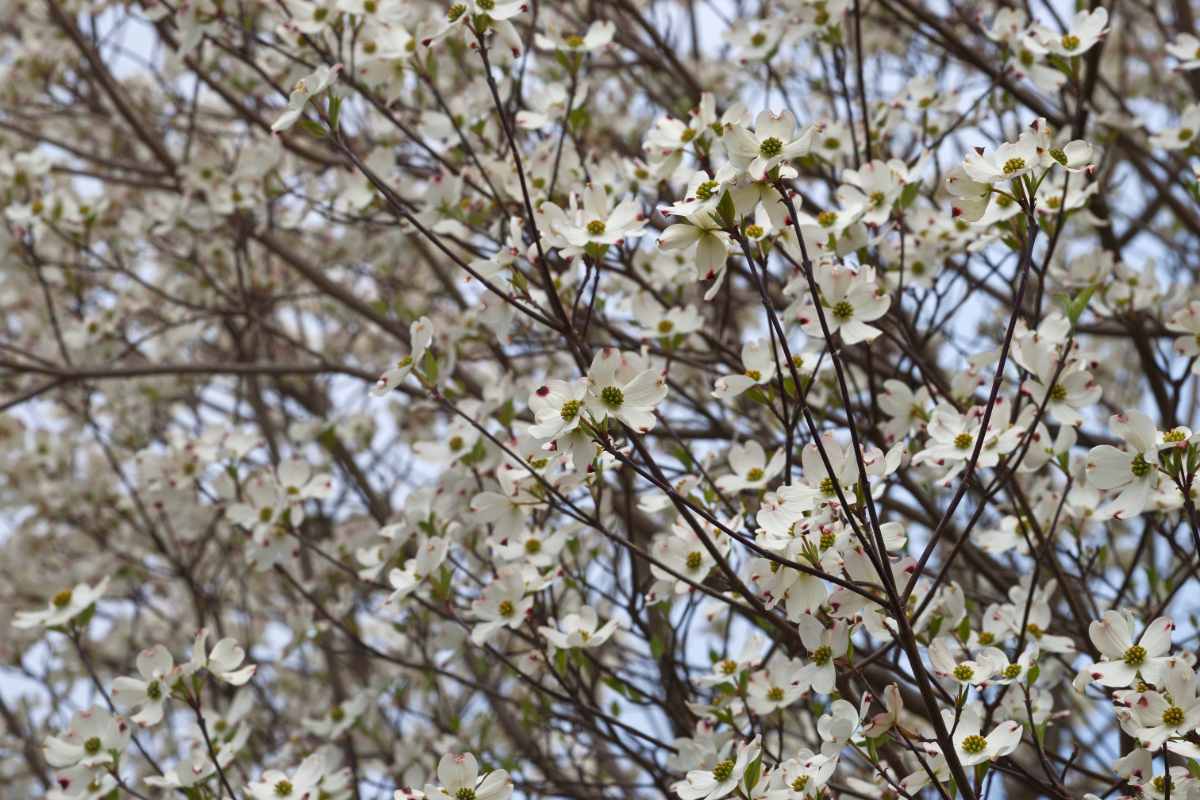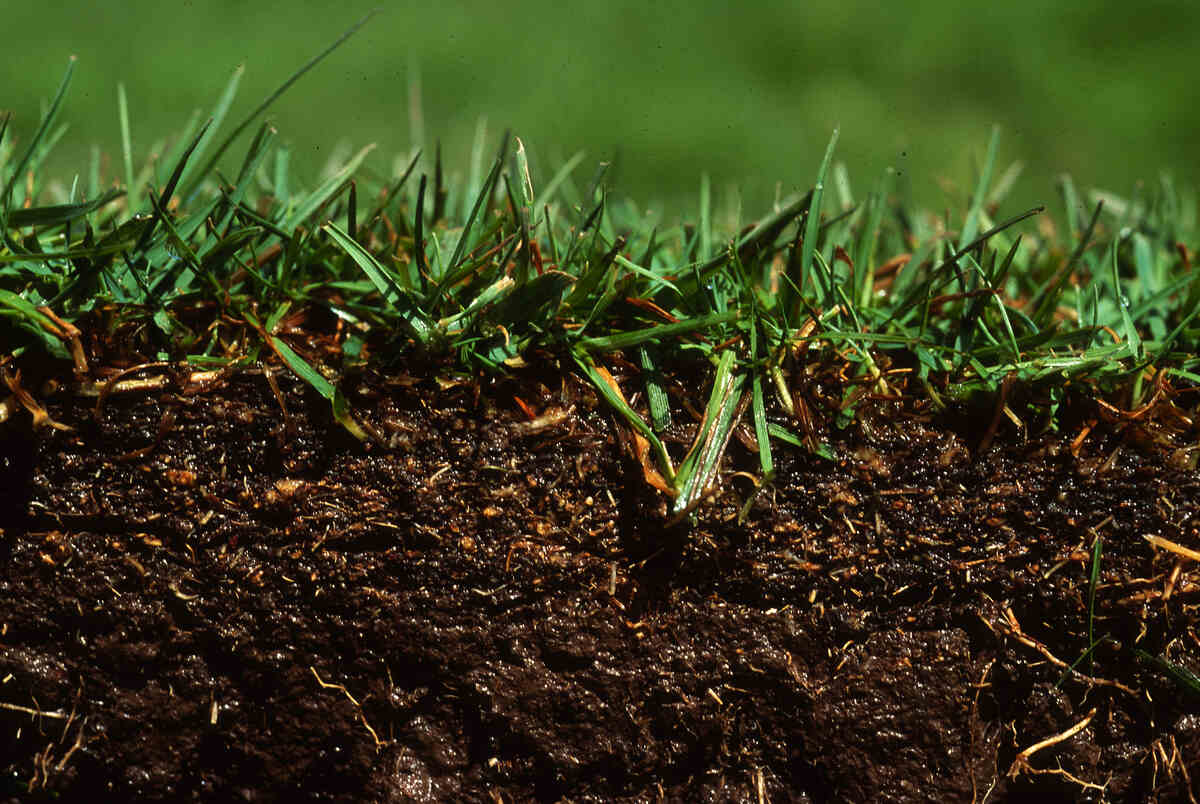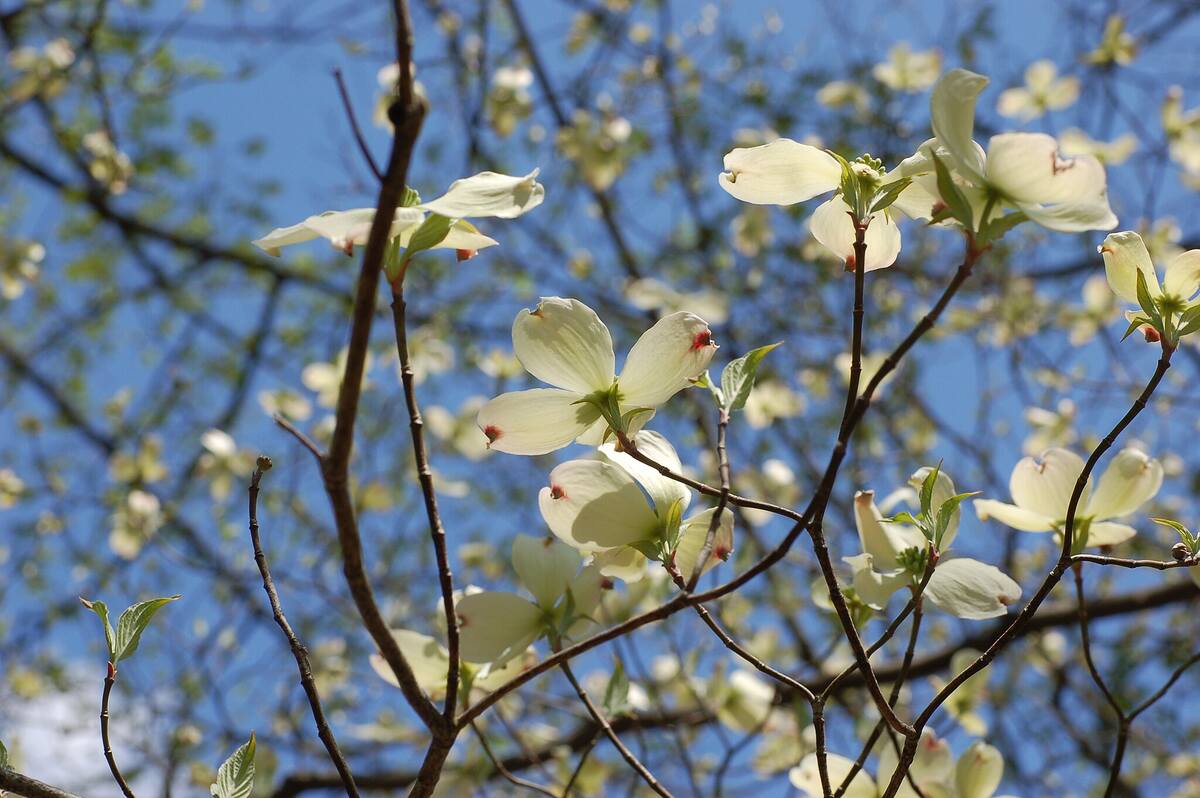
Have you just laid down a fresh lawn in the Show-Me state and are wondering about the next steps to elevate your outdoor space? The secret lies in selecting the best landscaping plants for Missouri to complement your new turf.
However, not all plants are ideal for Missouri’s climate, which ranges from cold and snowy in winter to steamy in the summer. Below, we’ve curated a list of 13 plants that will look great in your yard and are well-adapted to our climate.
- Best Flowers for Missouri
- 1. Prairie Blazing Star (Liatris pycnostachya)
- 2. Lance-Leaved Coreopsis (Coreopsis lanceolata)
- 3. Aromatic Aster (Symphyotrichum oblongifolium)
- 4. Purple Coneflower (Echinacea purpurea)
- 5. Downy Phlox (Phlox pilosa)
- 6. Black-Eyed Susan (Rudbeckia hirta)
- 7. Zigzag Goldenrod (Solidago flexicaulis)
- 8. Butterfly Milkweed (Asclepias tuberosa)
- Best Shrubs for Missouri
- Best Trees for Missouri
- How to Choose the Best Landscaping Plants
- FAQ About Landscaping Plants
Best Flowers for Missouri
1. Prairie Blazing Star (Liatris pycnostachya)
A Missouri native plant
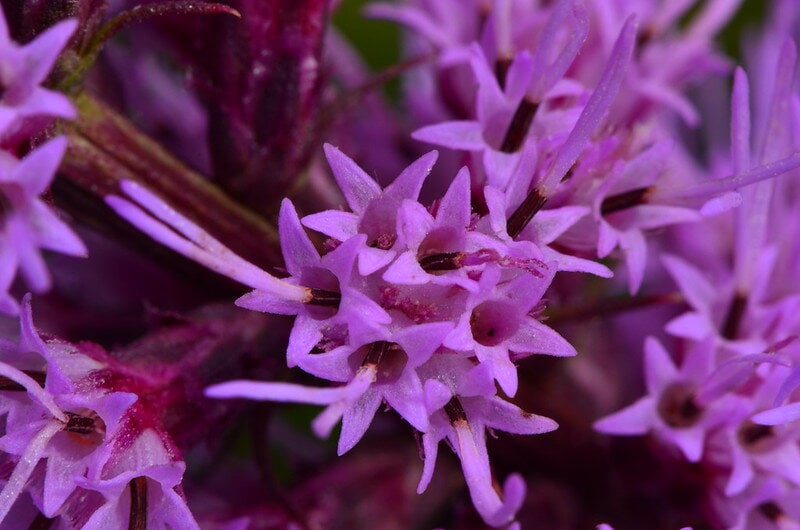
A real showstopper, the prairie blazing star is sure to catch the attention of anyone who visits your yard, including wildlife. This summer bloomer produces beautiful purple flowers, can grow up to 5 feet tall, and needs minimal maintenance. Prairie blazing star rarely faces problems with diseases or insect pests, too.
If you’re looking to build a pollinator garden, this plant would be a great addition. Its feathery flowers attract hummingbirds, butterflies, and birds.
Plant type: Flower
USDA Hardiness Zone: 3-9
Sun: Full sun
Soil: Well-drained, acidic
Duration: Perennial
Bloom time: July through October
Water use: Moderate
Mature height: 2 to 5 feet
Potential hazards: None
Maintenance: Low
2. Lance-Leaved Coreopsis (Coreopsis lanceolata)
A Missouri native plant
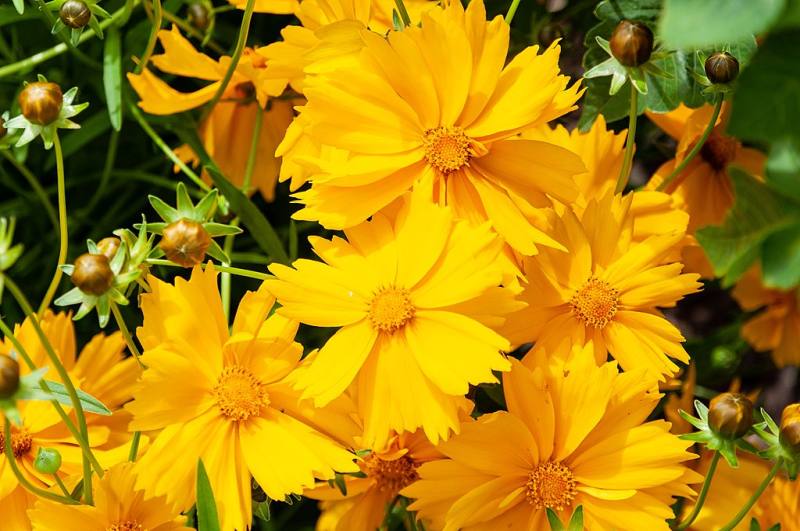
Lance-leaved coreopsis, also known as tickseed, is a yellow wildflower that’s pleasant to the eye and appealing to wildlife such as pollinators and birds. It grows up to 3 feet tall even in dry conditions and spreads easily. Just be careful that your tickseed doesn’t end up overtaking your yard, as this species is considered invasive in many countries.
Coreopsis species are usually seen as non-toxic, but there are some reports of lance-leaved coreopsis being toxic to livestock, so be cautious.
Plant type: Wildflower
USDA Hardiness Zone: 4-9
Sun: Full sun, partial shade
Soil: Sandy and rocky soils
Duration: Perennial
Bloom time: April to June
Water use: Moderate
Mature height: 1 to 3 feet
Potential hazards: Poisonous to livestock
Maintenance: Low to moderate
3. Aromatic Aster (Symphyotrichum oblongifolium)
A Missouri native plant
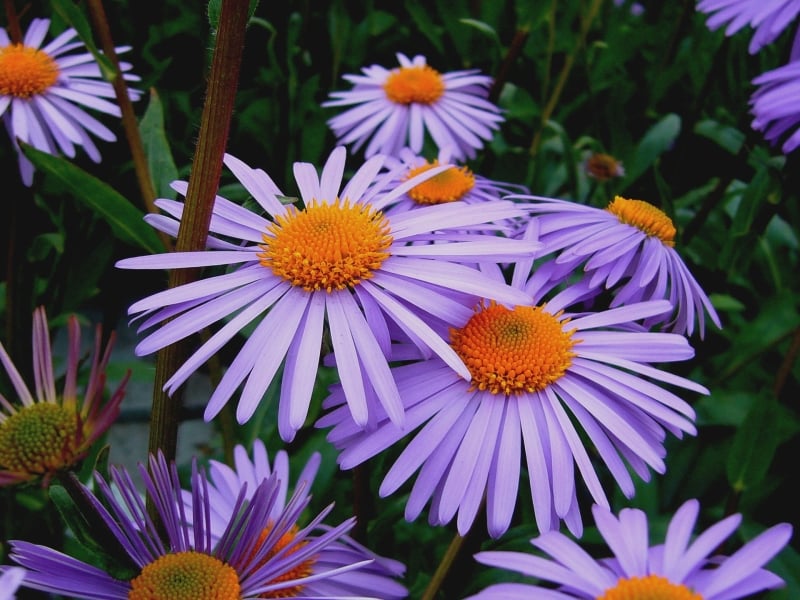
Aromatic aster blooms with purple, daisy-like flowers. Although the flowers themselves aren’t particularly fragrant, the flowerheads and foliage give off a balsam-like smell when crushed.
This flower is easy to care for and keep healthy, and it attracts wildlife like bees and butterflies. The endangered checkerspot butterfly even uses the aromatic aster as its host plant.
Plant type: Flower
USDA Hardiness Zone: 3-8
Sun: Full sun
Soil: Tolerates a lot of soil types, but prefers well-drained ones
Duration: Perennial
Bloom time: July through November
Water use: Low
Mature height: 1 to 3 feet
Potential hazards: Some aster variants are reported to be toxic, so practice caution
Maintenance: Low
4. Purple Coneflower (Echinacea purpurea)
A Missouri native plant
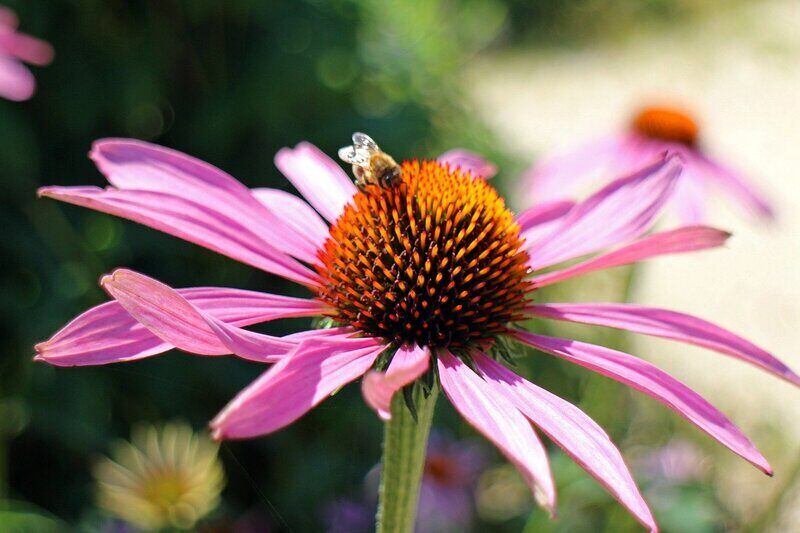
If you want your yard to turn into a purple paradise in the summer, purple coneflower is another flower to add to it. It produces lovely, bright purple petals, and also provides food for pollinators and birds. The plant is self-seeding, although you may need to divide its clumps every few years.
Also, note that the purple coneflower may sometimes suffer from diseases, like leaf spot, or a Japanese beetle infestation.
Plant type: Flower
USDA Hardiness Zone: 3-8
Sun: Full sun or partial shade
Soil: Prefers well-drained, moist, loam
Duration: Perennial
Bloom time: May through October
Water use: Moderate
Mature height: 3 to 4 feet
Potential hazards: None
Maintenance: Low
5. Downy Phlox (Phlox pilosa)
A Missouri native plant
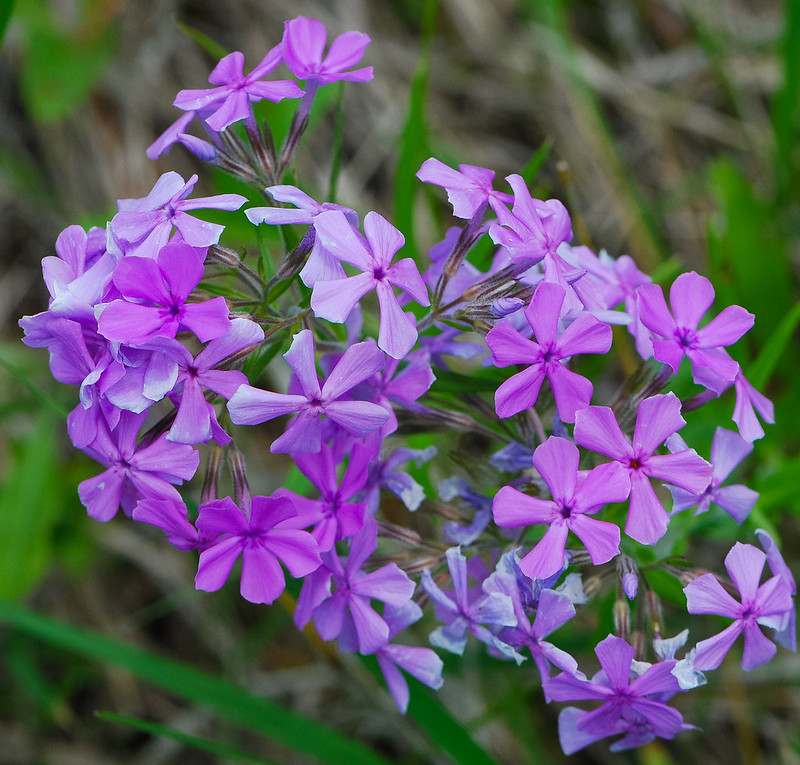
Downy phlox, also called prairie phlox, blooms with fragrant purple flowers that attract butterflies. It blooms in the summer, but it may produce a second, sparser round of blooms in the fall.
Moreover, the downy phlox seldom faces problems with diseases and insects, especially powdery mildew; just look out for spider mites, which may sometimes be a problem during dry spells.
Plant type: Flower
USDA Hardiness Zone: 4-9
Sun: Full sun, partial shade
Soil: Well-drained, sandy or rocky acidic soils
Duration: Perennial
Bloom time: March through July
Water use: Moderate
Mature height: 1 to 2 feet
Potential hazards: Non-toxic
Maintenance: Moderate
6. Black-Eyed Susan (Rudbeckia hirta)
A Missouri native plant
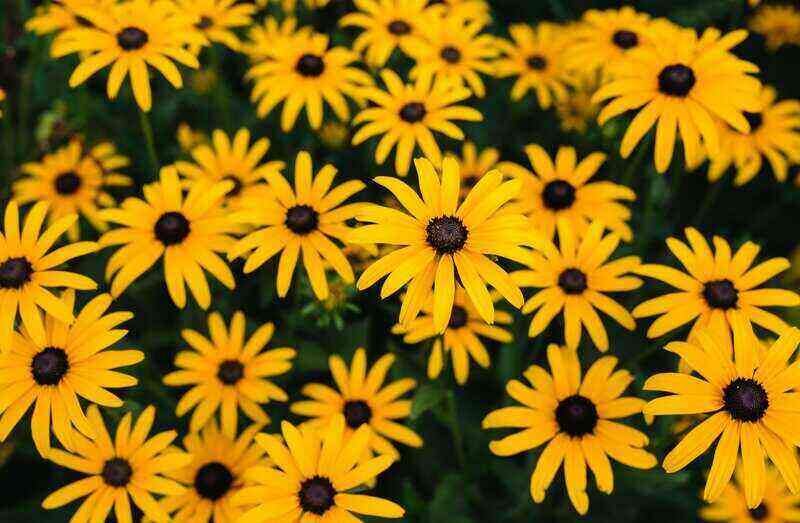
If you want to add an easy-care, vibrant splash of color to your garden, consider planting black-eyed Susans. The cheerful yellow and black flowers bloom within a year and stand up well to heat, drought, and cold.
Be careful, though. Black-eyed Susan is toxic to cats and may induce vomiting or face and mouth irritation if ingested.
Plant type: Wildflower
USDA Hardiness Zone: 3-8
Sun: Full sun to partial shade
Soil: Well-drained, acidic soils
Duration: Perennial
Bloom time: May through October
Water use: Moderate
Mature height: 2 to 4 feet
Potential hazards: Toxic to cats
Maintenance: Low
7. Zigzag Goldenrod (Solidago flexicaulis)
A Missouri native plant
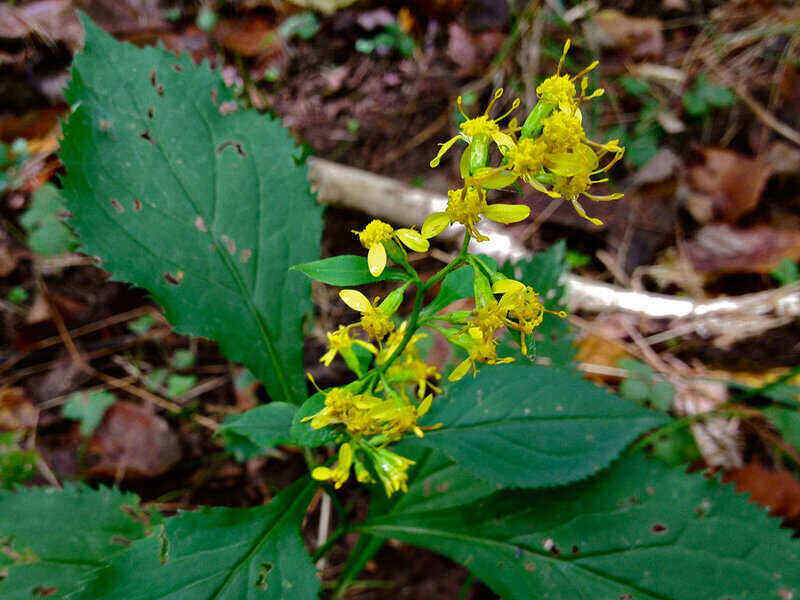
If you want to add beautiful ornamental plants to your outdoor area, the zigzag goldenrod is a great accent piece. Whether it grows in full sun or some shade, it gives your lawn a pop of yellow. Moreover, zigzag goldenrod attracts pollinators and rarely deals with diseases and insect pests.
Although some species of goldenrod are used as a health supplement, it’s important to consult a medical professional before taking this. Pregnant and nursing women or people with health problems shouldn’t use goldenrod supplements.
Plant type: Flower
USDA Hardiness Zone: 3-8
Sun: Full sun to full shade
Soil: Moist, acidic
Duration: Perennial
Bloom time: July through September
Water use: Moderate
Mature height: 1 to 3 feet
Potential hazards: Goldenrod supplements may have side effects.
Maintenance: Low
8. Butterfly Milkweed (Asclepias tuberosa)
A Missouri native plant
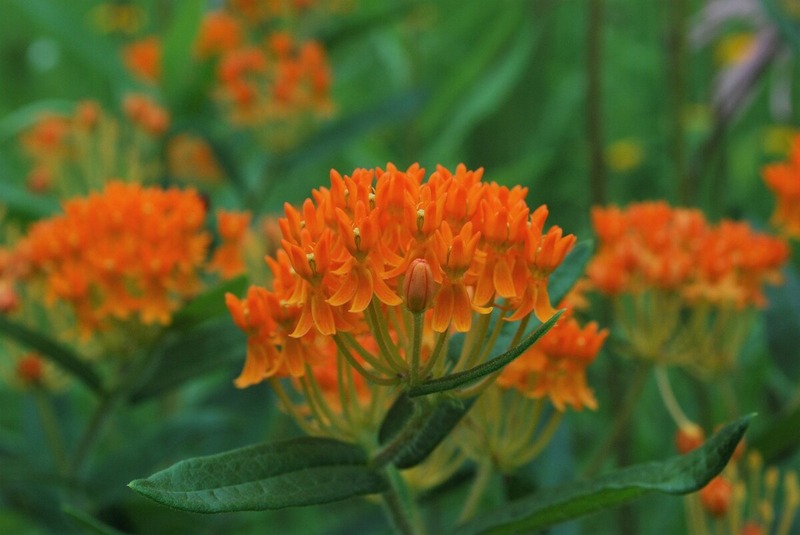
The butterfly milkweed, also known as butterfly weed and orange milkweed, is listed on the Missouri Botanical Garden’s Plants of Merit, meaning that it grows outstandingly well in Missouri and surrounding regions, is not invasive, and is resistant to diseases and insects.
Butterfly milkweed establishes in 2 to 3 years and then produces beautiful, atypical orange blossoms that produce nectar for pollinators. Moreover, milkweed is the only host plant for the monarch butterfly.
Plant type: Herb (a seed-producing perennial that does not develop woody tissue)
USDA Hardiness Zone: 3-9
Sun: Full sun, partial shade
Soil: Prefers well-drained, sandy soils
Duration: Perennial
Bloom time: May through September
Water use: Low
Mature height: 1 to 2 feet
Potential hazards: Toxic to humans, pets, horses, and other livestock
Maintenance: Low
Best Shrubs for Missouri
1. Eastern Redbud (Cercis canadensis)
A Missouri native plant
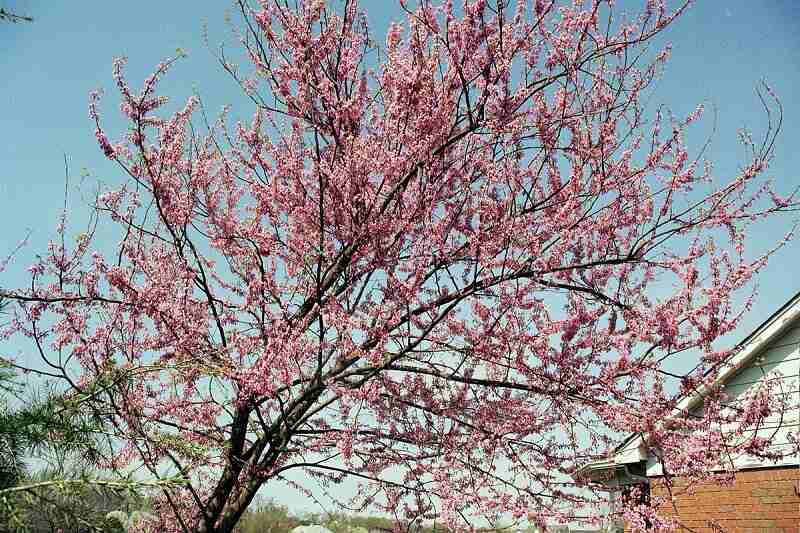
The eastern redbud is a tree that bursts with dainty, pink flowers early in the spring, even before its leaves emerge. It makes your yard look stunning and attracts pollinators such as bees and butterflies, adding beauty and biodiversity to your outdoor space.
This tree produces bead pod fruits, which attract songbirds, but they can also be eaten pickled or raw in salads, or fried in other dishes.
Plant type: Shrub or small tree
USDA Hardiness Zone: 4-9
Sun: Full sun, partial shade
Soil: Moist, well-draining, and nutrient-rich
Duration: Perennial
Bloom time: March through May
Water use: Low
Mature height: 20 to 30 feet
Potential hazards: No toxic effects, but the branches tend to break
Maintenance: Moderate
2. American Beautyberry (Callicarpa americana)
A Missouri native plant
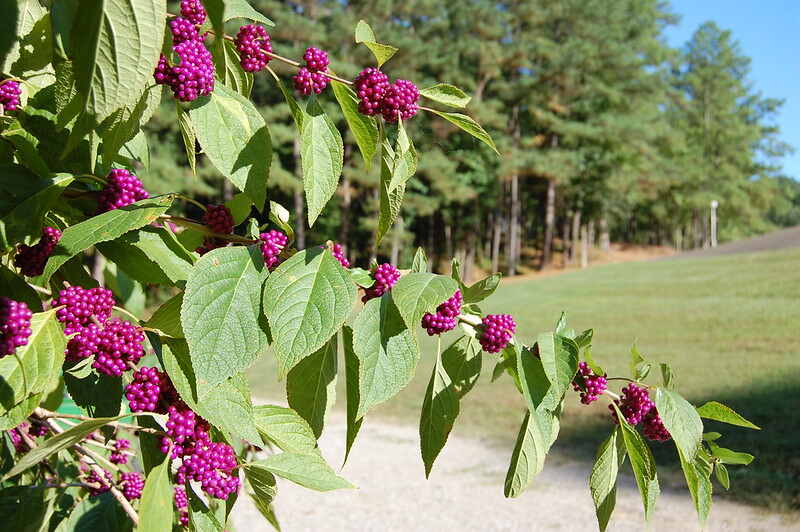
The American beautyberry produces small pink flowers in the spring and a showy display of purple berries in the fall. The berries not only stand out with their bright color but are also a real treat for various songbirds. Moreover, this plant is easy to care for and relatively resistant to drought and insects.
An interesting fact about the American beautyberry is that its leaves contain compounds (callicarpenal and intermedeol) that may work as a mosquito repellent. So, you might want to consider it in your arsenal against these pesky pests.
Plant type: Shrub
USDA Hardiness Zone: 6-10
Sun: Full sun to partial shade
Soil: Moist, rich soils, acidic
Duration: Perennial
Bloom time: June through August
Water use: Low
Mature height: 3-8 feet
Potential hazards: Mild gastrointestinal discomfort is possible
Maintenance: Low
3. Wild Hydrangea (Hydrangea arborescens)
A Missouri native plant
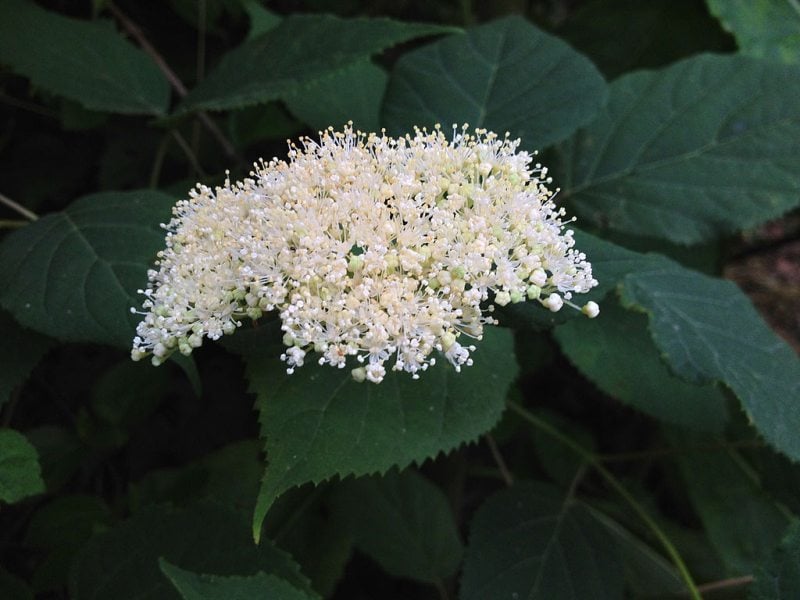
Wild hydrangea is a showy plant that’s also listed on the Missouri Botanical Garden’s Plants of Merit, meaning that it grows outstandingly well in Missouri and the surrounding regions. It tolerates a variety of soils as long as it gets enough moisture.
Because wild hydrangea grows well in wet soils, it’s a perfect choice for a rain garden. However, the plant is susceptible to some diseases and insect pest problems, so it needs some extra care. In addition, this plant is mildly toxic if ingested.
Plant type: Shrub
USDA Hardiness Zone: 3-9
Sun: Full sun, partial shade
Soil: Rich, well-drained, moist soils
Duration: Perennial
Bloom time: June through September
Water use: Moderate
Mature height: 3 to 5 feet
Potential hazards: Toxic to humans and pets
Maintenance: Low
Best Trees for Missouri
1. Flowering Dogwood (Cornus florida)
A Missouri native plant
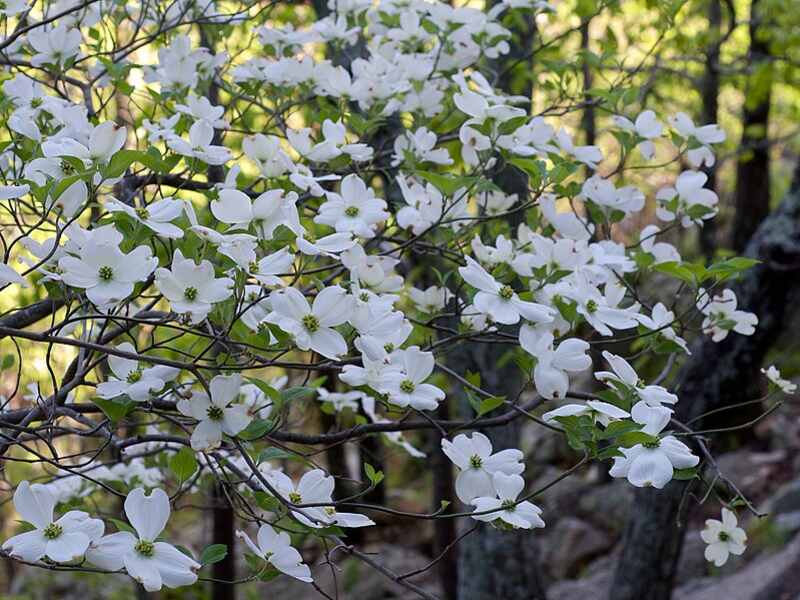
Flowering dogwood is a spring-blooming tree that looks great and attracts wildlife. It is Missouri’s state tree. Bees and butterflies enjoy its nectar, butterflies also use it to lay eggs, and birds feast on its red berries in the fall.
With its spring flowers and fall berries, the flowering dogwood can help your yard stand out throughout the year. However, the tree is susceptible to some diseases and will need moderate maintenance, such as mulching and soil amendments.
Plant type: Small tree
USDA Hardiness Zone: 5-9
Sun: Partial shade, but tolerates full sun
Soil: Well-drained soils, high in organic matter
Duration: Perennial
Bloom time: April through May
Water use: Low
Mature height: 15 to 25 feet
Potential hazards: Contact with this tree may cause skin irritation
Maintenance: Low
2. Pawpaw (Asimina triloba)
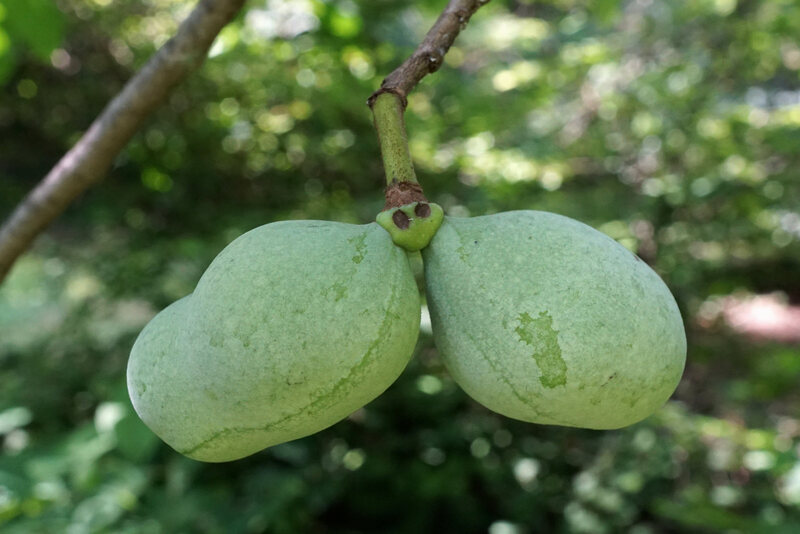
Pawpaw offers a touch of tropical beauty with purple flowers in spring and fruits that mature in early fall. It’s a favorite snack of various pollinators, birds, and other wildlife like squirrels and raccoons. Because the tree likes moist soil, it’s ideal for a rain garden.
However, pawpaw has been found to contain harmful chemical compounds with toxic effects, especially for pregnant women. Also, avoid feeding it to your pets.
Plant type: Tree
USDA Hardiness Zone: 5-9
Sun: Full sun, partial shade, shade
Soil: Prefers fertile, moist, acidic soils
Duration: Perennial
Bloom time: March through May
Water use: Keep soil moderately moist to wet but well-drained
Mature height: 15 to 30 feet
Potential hazards: Leaves and fruit are toxic if ingested
Maintenance: Moderate
How to Choose the Best Landscaping Plants
Selecting the right plants for your landscaping project goes beyond simply choosing what catches your eye at the garden center. You should choose plants that align with the local climate and soil conditions, and also with your personal preferences.
That’s why opting for Missouri native plants, whenever possible, is a wise choice. They’re used to Missouri’s environment, making them more resilient and lower-maintenance. Additionally, they support water conservation, minimize erosion, and reduce the need for chemicals, among other advantages.
And if you’re looking to further improve your Missouri landscape with more than just plants, take a look at our helpful guides:
FAQ About Landscaping Plants
What Plants Grow Better in the Shade in Missouri?
Several plants on our list can tolerate varying levels of shade. However, the pawpaw and the zigzag goldenrod are notable for their ability to thrive in deep shade, making them good choices for those darker spots in your garden.
It’s important to remember that even shade-tolerant plants, like the flowering dogwood, require some sunlight to perform photosynthesis. They thrive with just a few hours of sunlight each day, but they still need some.
What is Missouri’s State Flower?
The white hawthorn has been Missouri’s state flower since 1923. It has large, clustered white flowers that bloom from March through June. This plant also boasts red fruits from late summer into early fall, adding a pop of color to Missouri landscapes.
What is Missouri Soil Like?
Missouri’s soil is predominantly clay loam, characterized by its fertility and slightly acidic nature. However, soil conditions can vary across different regions of the state. To ensure you choose the best plants for your specific area, conducting a soil test is highly recommended.
Call In the Pros
With such a wide selection of landscaping plants, you can create a yard that not only looks beautiful but also supports local wildlife.
Once you pick the right plants and grass, you’re not done just yet. Your yard will need regular maintenance to thrive. If you’d like some extra professional help, get in touch with a local Missouri landscaping pro near you. Whether you’re in Kansas City, St. Louis, Springfield – or anywhere else in the great state of Missouri – LawnStarter can connect you with passionate lawn care and landscaping pros with helpful advice.
Main Image Credit: Pxhere

